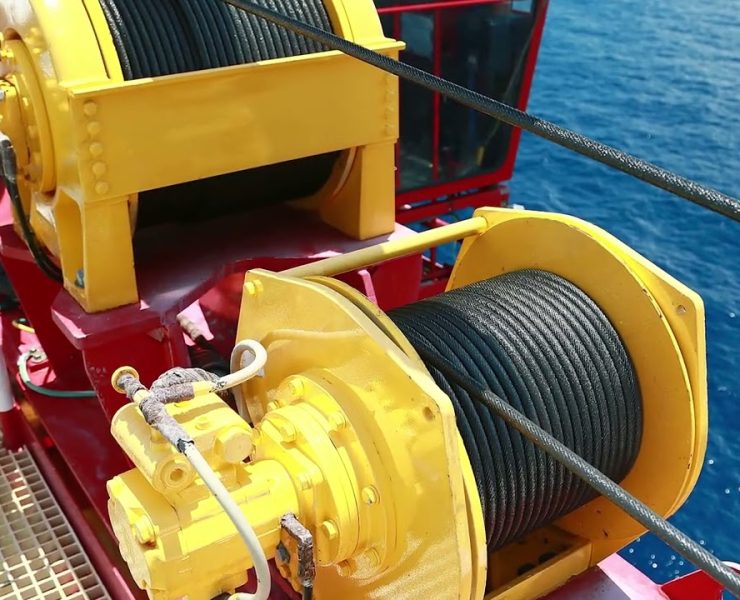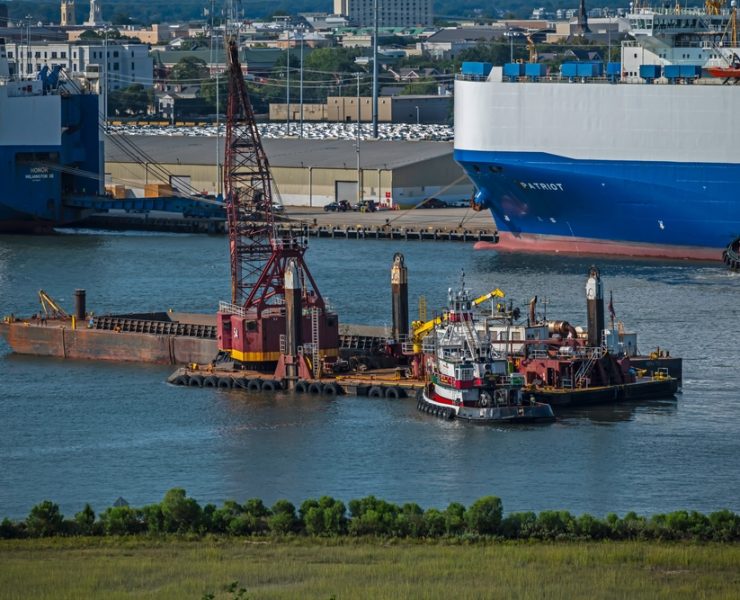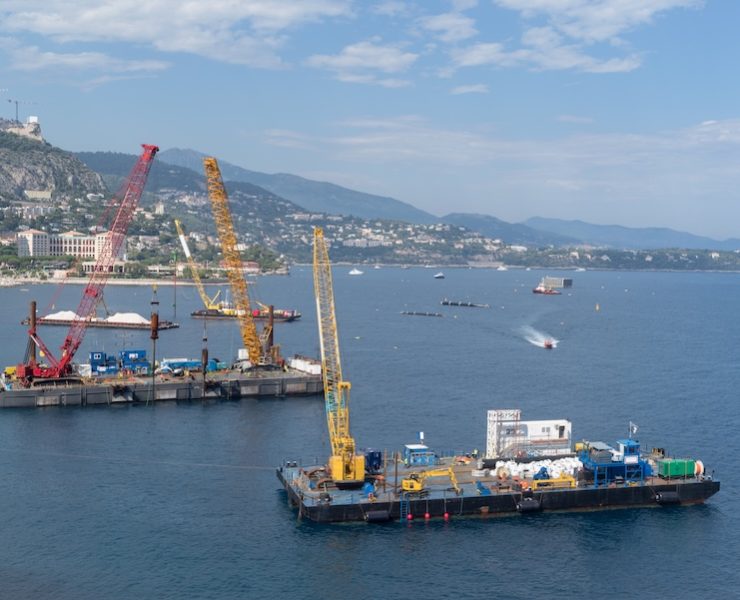The Design and Construction of Levees
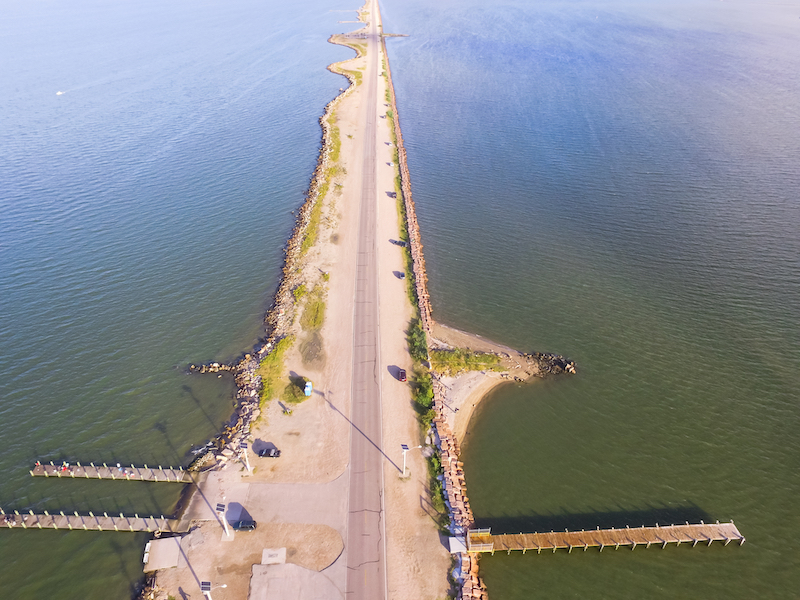

View the complete article here.
A levee is an embankment that serves a particular purpose: to provide flood protection from seasonal high water. Unlike small earth dams, levees are subject to water loading for short periods of time, from a few days to a few weeks per year. For this reason, they must be designed and constructed based on criteria specific to levees.
Levees differ from earth dams in several important respects. First, the alignment of levees is dictated primarily by flood protection requirements, which generally results in construction on poor foundations. Second, levee embankments may become saturated beyond the limit of capillary saturation for only a short period of time. Third, borrow for levees is typically obtained from either shallow pits or channels that are excavated adjacent to the levee. This produces fill material that is heterogeneous and less than ideal.
In designing a levee, a contractor must consider numerous factors based on the individual project. These factors include the soil profile of the area, strengths of the foundation materials, slope stability, settlement, and trafficability of the levee surface. For each project, a contractor should undertake field investigations in order to design a levee that meets the requirements of the area.
The method of construction must also be considered when designing a levee. A levee may be built using no compaction to carefully controlled compaction, with steep slopes or relatively flat slopes. Levee maintenance is also a factor that must be weighed as part of the long-term viability of the project.
The proper design and construction of levees is vital in order to prevent failure. There are four primary causes of levee failure: overtopping, surface erosion, internal erosion (piping), and slides within the levee embankment or the foundation soils. By understanding the general rules for designing and constructing a levee, a contractor can avoid many of the problems that lead to levee failure.
Field Investigations
The first step in any levee project is to conduct a field investigation. Because most levees are in alluvial flood plains, the distribution and engineering characteristics of alluvial deposits near the proposed levee sites must be analyzed, as the distribution, nature and type of flood plain deposits are directly related to the changes in the environment of the river and its tributaries.
As an initial matter, all available information should be examined, such as topographic, soil and geological maps, as well as aerial photographs. All information on existing construction in the area should be obtaining, including anything related to utilities, highways, railroads and hydraulic structures. If there are any boring logs, they should be secured. Federal, state and private organizations provide free access to the Geographic Information System (GIS), which is capable of compelling large multi-layer databases, interactively analyzing and manipulating those databases, and generating and displaying resultant thematic maps and statistics to aid in engineering management decisions. This data should be utilized in making engineering decisions.
Next a field survey should be undertaken. This allows the contractor to become familiar with the proposed alignment of the levee along with the characteristics of any proposed borrow areas. Items such as riverbank slopes, rock outcrops, earth and rock cuts or fills, surface materials, poorly drained areas, evidence of instability of foundations and slopes, emerging seepage, and natural and man-made physiographic features should all be noted during this field survey.
Subsurface Exploration
After a field investigation has been completed, the next step is to conduct a subsurface exploration in two phases. The first phase consists of disturbed sample borings and, if necessary, test pits excavated using backhoes, dozers or farm tractors. It may also include geophysical surveys. The second phase involves both disturbed and undisturbed sample borings, as well as geophysical methods. Undisturbed samples may be obtained by hand carving block samples from test pits, or by rotary or push-type drilling methods.
Based on the field investigation and the nature of the levee project, the location and spacing of borings should be determined by an engineer. Generally, initial borings are spaced from between 200 to 1,000 feet (60 to 300m) along the alignment. In expected problem areas, the borings should be spaced more closely together. The spacing should not be uniform, but should be based on geologic information. The borings can either be laid out along the levee centerline, or staggered along the alignment to cover more area and provide information on borrow materials. In Phase 2, the locations of borings should be based on Phase 1 results. Undisturbed sample borings should be located where data on soil shear strength is most needed. The most effective method is to group the foundation profiles, which have been developed on the basis of geological studies and exploration in similar conditions, and then locate undisturbed sample borings to define soil properties in critical reaches.
The borings that are located along the alignment should be taken to a depth that is at least equal to the height of the proposed levee at its highest point. At a minimum, the borings should be no less than 10 feet (3m) in length. The depths of borings should always be deep enough to provide sufficient data for stability analysis of the levee and foundation. When a levee is located near a riverbank, this is particularly important, because borings must provide data for both stability analyses for both the levee foundation and the riverbank. If pervious or soft materials are encountered, the borings should extend to impervious or firm material. At the structure location, borings should extend well below the zone of significant influence created by the load, and be deep enough to permit analysis of approach and exit channel stability, as well as underseepage conditions. For borrow areas, the boring depth should extend at least several feet below the allowable borrow depth or to the groundwater table.
Field Testing
There are a number of tests that can be conducted in the field in order to complete subsurface investigations prior to constructing a levee. This geophysical data must be interpreted together with information recovered from borings by qualified personnel.
There are two categories of geophysical field testing methods that can be utilized: those that can be accomplished from the ground surface, and those that are accomplished from subsurface borings. Ground surface exploration methods include seismic methods, electrical resistivity, natural potential (SP) methods, electromagnetic induction methods, and ground penetrating radar. Each test provides different information and requires different properties of levee and/or foundation materials in order to be effective, so a careful selection of the test (or combination of tests) that will be utilized will aid in the design and construction of a levee.
Seismic surveys provide information about material velocities, delineation of interfaces between zones of differing velocities, and depths to these interfaces. The seismic method requires a contrast in wave transmission velocities and that any underlying stratum transmit waves be at a higher velocity than the overlying stratum. If the surface terrain and/or the layer interface are steeply sloping or irregular, a seismic survey is not recommended. Electrical resistivity surveys can be used to locate and define zones of different electrical properties, such as pervious and impervious zones of low resistivity, such as clayey strata. The resistivity method requires a resistivity contrast between the materials being located.
Geophysical logging within a borehole can be used to correlate subsurface soil and rock stratification, as well as to provide quantitative engineering parameters, including porosity, density, water content and moduli. This type of testing can also provide valuable data for interpreting surface geophysical data. Not only are these tests cost-effective, but they offer a fast and reliable form of obtaining data.
Electromagnetic (EM) induction surveys use EM transmitters that generate currents in subsurface materials. The currents produce magnetic fields that are detectable at the surface, which can be used for horizontal profiling to detect anomalous conditions along the centerline of proposed levee construction or along existing levees. Self potential (SP) tests are based on change of potential of ground by human action or alteration of original condition. There are found known electric potentials: fluid flow, electrokinetic or streaming, liquid junction or diffusion, mineralization, and solution differing concentration. The application of this method is relatively simple and is best used to detect seepage through, under, or around levees.
Estimating foundation strength is often desirable during the initial phase of the levee design project. A number of tests can be used, including the split-spoon penetration resistance; natural water content of disturbed or general type samples; hand examination of disturbed samples; position of natural water contents relative to liquid and plastic limits; and torvane or pocket penetrometer tests on intact portions of general samples or on walls of test trenches.
In situations where undisturbed samples are either not being obtained or are difficult to obtained, in situ vane shear tests can be used to determine undrained shear strength. If shells or fibrous organic material are present, it can lead to errors in the test.
If there are potential underseepage issues in a levee project, a piezometer should be installed to observe groundwater fluctuations. After a piezometer is installed, a permeability test should be conduction to obtain information on foundation permeability and monitor the function of the piezometer.
Finally, field pumping tests can be used to determine permeability of pervious foundation tests. While this information can be estimated by using existing correlations with grain-size determination, field pumping tests are the most accurate method of determining permeabilities of stratified in situ deposits. However, these tests are costly, and generally justified only at sites of vital structures where extensive pressure relief well installations are planned. The procedure involves installing a well and piezometers at various distances from the well to monitor the drawdown during pumping of the well.
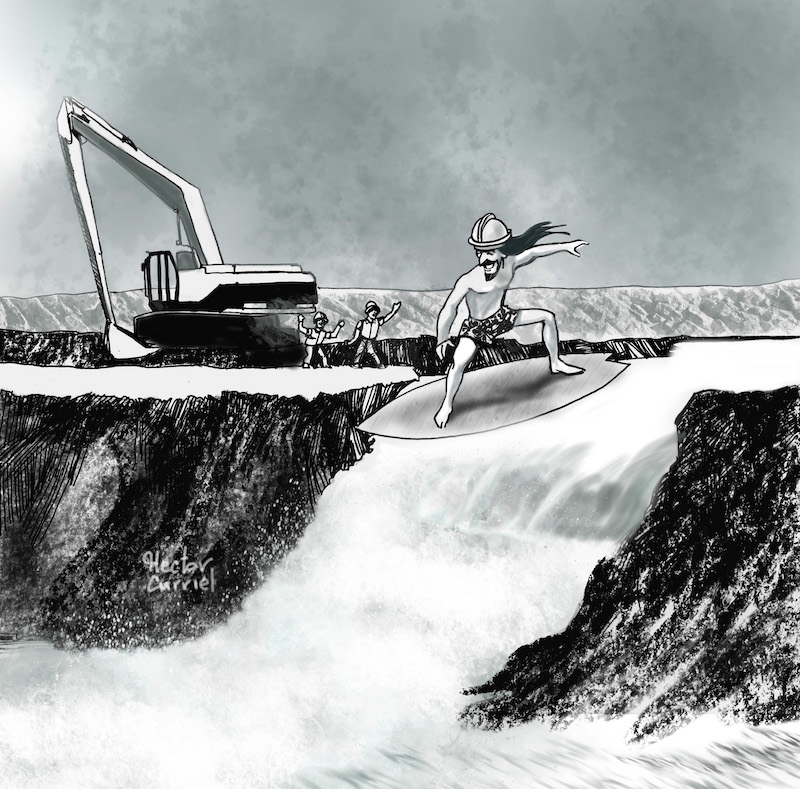
Levee Construction
For levees composed of pervious and impervious materials, there are three types of levee embankment constructions, classified according to the construction method used. These include compacted, semi-compacted, and uncompacted.
Levees constructed using pervious materials, such as sands or sands and gravels, may be placed either with normal earthmoving equipment or by hydraulic fill methods. Compaction by vibratory means is generally not necessary, except in seismically active areas or those areas that require a high degree of compaction. If underwater placement is required, it can be accomplished with pervious fill using end-dumping, dragline or hydraulic means. Fine-grained fill may also be placed, provided that consideration is given to the low density and strength obtained with these materials.
Foundations
To prepare a foundation for a levee, a crew must clear and grub the area. Most levees will also require some degree of stripping. These steps are the minimum required to construct a levee foundation.
Clearing involves completely removing all objects and obstruction matter above the ground surface. This includes all trees, fallen timber, brush, vegetation, loose stone, abandoned structures, fencing, and other debris. The entire foundation area under the levee and berms should be cleared well in advance of any construction operations.
The removal of all stumps, roots, buried logs, old piling, old paving, drains and other matter is the next step in the process. Grubbing is generally not required under stability berms. However, any roots that are more than 1.5 inches in diameter within the foundation area should be removed to a depth of 3 feet. All holes and depressions should be flattened before backfilling with material similar to adjoining soils. Backfill should be placed in layers up to the final foundation grade, and compacted to a density that is equal to the adjoining undisturbed material to avoid soft spots under the levee and maintain continuity of the natural blanket.
Stripping consists of removing low growing vegetation and organic topsoil, with the depth of the process determined by local conditions. It normally varies from between 6 to 12 inches. It is usually limited to the foundation of the levee itself, and not required under the berms. All stripped material that can be used for topsoil should be kept for later use, and unsuitable material should be disposed of by burning or in an environmentally approved manner.
Once clearing, grubbing, stripping and disposal of materials has been accomplished, an exploration trench should be dug under all levees. The purpose is to expose or intercept any undesirable features, such as animal burrows, pockets of unsuitable material or water or sewer lines. The trench should be located at or near the centerline of hauled fill levees, or at or near the riverside toe of sand levees, so that it will connect with waterside impervious facings. Backfill should be placed only after the trench is carefully inspected to ensure that the seepage channels and undesirable materials are not present. If they are, they should be dug out to allow backfill compaction.
In some situations, it may be necessary to dewater levee foundations to excavate and backfill in the dry. This is an expensive process if more than simple ditches and sumps are required to dewater, and for that reason, seepage control measures are often chosen instead.
The final step in preparing a levee foundation is to remove and replace soft or organic spots with compacted material. Unless foundation surfaces are adversely affected by remolding, the foundation surfaces should be broken up to a death of at least 6 inches before the placement of the first lift of fill. This will ensure a good bond between the foundation and fill, and to eliminate a plane of weakness at the interface. During this process, the foundation should be drained.
Very soft clays can fail in a number of ways, including excessive settlement, shear failure and failure by settlement. Soft clay deposits may have a zone of stronger clay at the surface, which may eliminate the need for treatment. Sensitive clays are brittle, and while possess strength when undisturbed, can loss partial or complete strength when disturbed. This type of clay is rare. Loose sands can liquefy and flow upon disturbance, including shock or shear strains caused by erosion at the toe of slopes. Organic soils are compressible and often exhibit low shear strength. Many organic deposits, such as peat, exhibit predictable physical characteristics and behaviors. For example, fibrous organic soils will generally consolidate and gain strength rapidly. In contrast, debris deposited by man has variable characteristics that are impossible to predict.
The most straightforward method of dealing with weak or excessively compressible foundation soils is to simply remove them, and then backfill the excavation with suitable compacted material. This is possible only where the deposits of this material are not excessively deep. This method should be used whenever feasible.
Displacement by end dumping is also a possibility for low levees that are constructed across sloughs and stream channels whose bottoms consist of very soft fine-grained soils. The depths of these deposits may not be large, yet the cost of removing them may not be justified. In this case, fill can be end-dumped from one side of the slough or channel. The weight of the fill will eventually displace the foundation soils to the sides and front so that the levee can be brought to grade. In this process, the fill should be advanced with a V-shaped leading edge so that the center of the fill is most advanced, displacing the soft material to both sides. The displaced material will generally come visible along the sides of the fill, and should not be removed. One disadvantage of this method is that all of the soft material may not be displaced, which could result in slides.
Stage construction can also be used where foundation material is not adequate to support the entire weight of the embankment, if it were built continuously at a pace faster than the foundation material could drain. In stage construction, the embankment is built in stages or intervals of time. It is built to intermediate grades and allow to rest before placing more fill, permitting dissipation of pore water pressures. This allows the foundation to gain strength so that higher embankment loading may be supported. The stage construction process works well for clay deposits that are interspersed with highly pervious silt or sand seams, provided that these seams have exits for the escaping water. Estimates of the time required for the needed strength gain can be made from the results of consolidation tests and study of boring data, with piezometers installed to monitor the rate of pore water dissipation. The main disadvantages of this method include delays in the construction process and uncertainty in scheduling and efficiency.
Finally, it is possible to densify loose sands through methods such as vibroflotation. Because these methods are expensive, they are usually not utilized except in important structures in a levee system.
Embankments
Building an embankment for a levee presents many unique challenges, particularly when compared to building a dam. First, construction operations are often carried out simultaneously across many miles of a levee, while most dams are less than .5 miles in length. Second, levee inspection personnel generally operate out of an office, while most inspection staff and testing facilities are located directly at a dam site. In addition, there are often financial restraints that prevent assigning an optimal number of inspectors to levee work. For these reasons, it is critical to carefully plan the process before starting embankment construction.
Levee embankments are usually constructed as homogenous sections, because zoning is usually not necessary or practicable. However, in some situations, materials of differing permeabilities will be found in borrow areas. In that case, the more impervious materials should be placed towards the riverside of the embankment, with the more pervious materials toward the landslide slope. If necessary, landside berms should be constructed of the most pervious material, with riverside berms made of the more impervious material. If largely pervious materials are available, a central impervious core can be specified, or the riverside slope of the embankment can be covered with a thick layer of impervious material.
Riverside slopes should be protected to withstand the erosional forces of waves and stream currents. The amount of protection necessary will depend on the length of time that flood waters are expected to act against a levee; the relative susceptibility of the embankment and materials to erosion; the ability to shield the riverside slop from wave attacks and current using timber stands and wide spaces; any structures riverside of the levee; any turbulence and susceptibility to scour; and the steepness of riverside levee slopes.
In some cases, low cost slope protection, such as grass cover, may be adequate for a levee reach. There may still be limited areas of the levee embankment where the need for greater protection may develop infrequently. In those cases, greater slope protection, such as riprap, articulated map or paving should be provided beneath bridges and adjacent to structures that pass through levee embankments. Riprap is more commonly used because it is relatively easy to handle, stockpile, place and maintain. If the slope is composed of erodible granular or fine-grained soils, a bedding layer should be added beneath the riprap. If suitable rock is not available, soil cement may be the most economical slope protection.
View the complete article here.
What are the primary causes of levee failure, and how can they be prevented?
Levee failures can result from overtopping, surface erosion, internal erosion (piping), and slides; prevention involves proper design, construction, and addressing foundation issues.
What steps are involved in the field investigation process for designing a levee?
Field investigations include analyzing topographic, soil, and geological maps, conducting a field survey, and writing a report evaluating soil profiles, foundation strengths, and other factors essential for levee des














